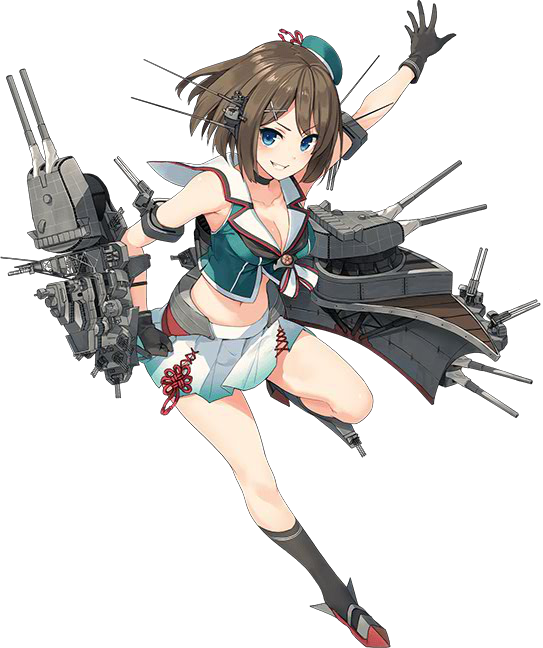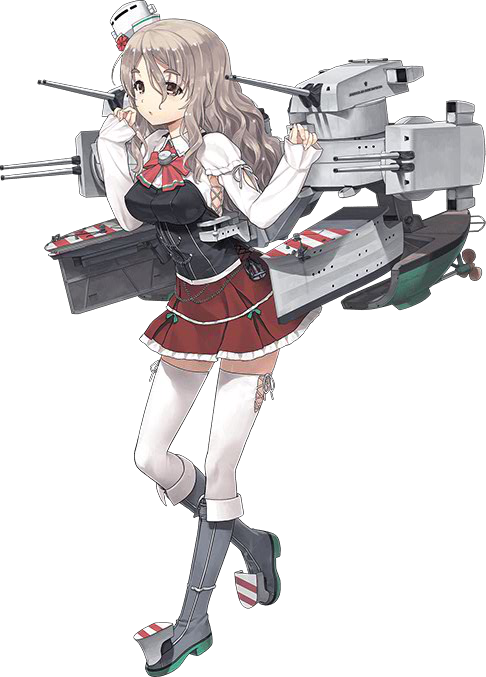
Choukai
Scuttled by Fujinami after gunfire/bomb damage in Battle off Samar, October 25, 1944.
Her torpedo armament was detonated by the single stern-mounted 5-inch secondary battery of the escort carrier she was chasing, the USS White Plains (CVE-66). Due to the location of the torpedo launchers, the explosion set off a chain reaction which effectively crippled the ship, rendering it vulnerable to subsequent air attacks that led to the evacuation of its surviving crew and scuttling by Fujinami.
Probably the deepest-known wreck, due to the fact she was sunk directly above the Philippine Trench, and probably lies in about 26,600 feet (8,107 meters) of water, well beyond the reach of manned submersibles.

Maya
Torpedoed by the submarine USS Dace on October 23, 1944 near Palawan, Philippines. Atago shared a similar fate in the same area.
Most of her crew was rescued and transfered to battleship Musashi, but Musashi was sunk the following day.
She shares the same seiyuu (Touyama Nao) as the four Kongou sisters, referencing her history of being mistaken for a Kongou battleship; Takao class cruisers were built with heavy designs similar to that of lighter battleships.

Prinz Eugen
Her name translates to 'Prince Eugene', referring to Prince Eugene of Savoy, one of the most important Field Marshals in the history of the Austrian military. He served the Habsburg Monarchy during the late 17th & early 18th century.
Sortied with Bismarck during Bismarck's first & only operation, Operation Rheinübung.
One of the Kriegsmarine ships who survived World War II.
ne of the many participants in Operation Crossroads.

Haguro
Sunk in the Strait of Malacca by gunfire and torpedoes, May 16, 1945. She was the last major ship of the war, and one of the last of time, to be sunk in a traditional gunboat battle.
Wreck discovered on March 4th, 2003, in 213 ft. of water. Sadly, like Kuma, became a victim of illegal salvage activity in 2014.
Named after Mt. Haguro in Yamagata prefecture.

Zara
Named after the city of Zara (today Zadar, in Croatia). The city was named Zara when it was under the authority of the Republic of Venice in the 15th century.
Crippled by RN battleships' shellfire during the Battle of Cape Matapan, and eventually finished off by the destroyer HMS Jervis at 02:40, 29 March 1941.
Her lines about Pola are a reference to the setting of her loss in the battle mentioned above; her sister ship Pola was crippled by a torpedo and fell behind, so Zara and her division (another cruiser, Fiume, and four destroyers) were sent back to provide help. The British ships were thought to not be that close, and the lack of radar precluded the possibility of spotting them before it was too late.

Pola
Named after the city of Pola (today Pula, in Croatia). The city has been under the authority of Republic of Venice a few times, with the longest being from 1331 to 1797, and was part of the Kingdom of Italy from 1918 to 1947.
Crippled by aerial torpedo dropped by a Swordfish bi-plane torpedo bomber from HMS Formidable during the Battle of Cape Matapan.
Sunk by HMS Jervis after the surviving crew was removed by said destroyer the following night. The boarding party from Jervis found some crew members drunk and, according to legends, "empty bottles littered across the deck" (though such details are largely the result of postwar exaggeration). The episode was greatly exploited by British propaganda at the time.